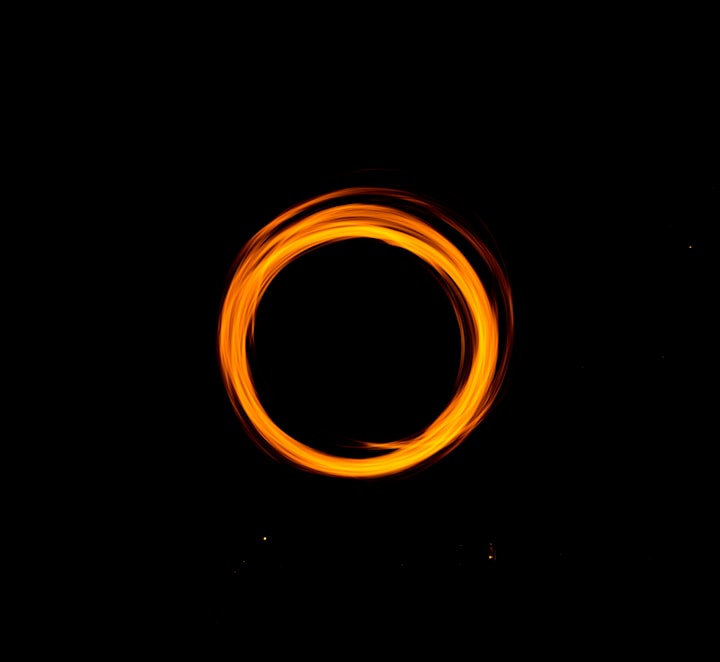
According to British astronomer Stephen Hawks, the Big Bang, the high temperature and solidity of the universe that formed 13.8 billion years ago, produced many black holes weighing the same weight or less as an asteroid. Larger craters are thought to have been formed by sudden collapses or by massive accumulations of millions or millions of stars. In the words of space, 690 million years is a blink of an eye, and not all stars are formed by the fall of a black hole that is large enough.
Large black holes, according to Einstein's theory of relativity, will have a mass equal to billions of sunlight and may be hidden in the center of many galaxies. The presence of large black holes weighing ten billion liters was taken from the effects of high-speed electrical power around the NGC 3842 centers and the NGC 4889 galaxies in the Milky Way. Star-shaped black holes, which are the result of the collapse of large stars, suggest that compound black holes may be formed in the early stages of galaxy formation by dropping large electric clouds.
This definition compares with the current understanding of the formation of large black holes, that is, formed from the center of large stars or from the collapse of these stars. However, we have seen many systems in which matter and the gas clouds of all-stars come together and the large size of the black hole is responsible for this process. The formation of black holes in the original universe may have been caused by direct formation because black holes do not have to be built from fossils, which gives scientists the impression that there are large black holes in the early stages of the universe's history.
This insertion results in a crazy amount of gravitational force that pulls objects to each other instead of pulling them. The closest objects can be lost in the pull of a gravitational force. Black holes are also called black holes because they are formed by the death of the star when the internal pressure of the exhaust gas is no longer sufficient to withstand the force of gravity pressing its remaining matter, and the star falls into a dark hole a few times the weight of the sun.
The well-known method of quark drop (pressure that occurs between quarks in stars) is powerful enough to stop the insertion of an object into a black hole. The decrease in billions or billions of solar flares under the stars under the gravitational pull of a large black hole represents the mass production of quasars of certain galaxies.
Along the way, astronomers identified several binary stars and determined that the radio station called Sagittarius A * in the center of the Milky Way contained a massive 4.3 million black hole with a solar system. A stellar observation of the orbits of such a huge black hole indicates the existence of a black hole equal to more than 4,000,000 days.
The work of Robert Oppenheimer and others led to the notion that things could build up from the collapse of giant stars. In the 1970s, John Wheeler expanded the term "black hole" - and Jacob Bekenstein said that "the black hole is like hair, in the sense that only black hole structures have its size, its electrical power, and its angular intensity," said Malcolm Perry, a naturalist. at Cambridge University, a collaborator with Hawking told OpenMind. It is thought that black holes continue because the problematic information about the matter that formed within the black holes is thought to exist, inaccessible externally, and represented by the scope of the event in terms of holographic principles.
The invisible border, Event Horizonte, is a point of no return where not only escapes, not only light but also dust and electricity accelerated by gravity as it warms, shines, and radiates, creating a compact disc that allows us to retain the shadow of a black hole and cast light rings. The black thing is a mysterious concept that holds galaxies together, and it is still well-understood. Unlike things that we can see in other things with their gravitational pull, we do not know exactly what the dark substance contains because it does not emit light and cannot be seen directly.
The third option is the collapse of the constellations, in which the constellation falls. Such bodies are formed when constellations collide in response to series. A large cloud of accumulating gas can handle this process.
As the stars reach the end of their life span, most of them absorb and lose weight, cooling off to form white patches. Larger vegetables (10 to 20 times larger than our Sun) are set to form more neutron stars, also called black holes.
When these giants build, they accumulate large amounts of dust and gas around them, and in many cases the galaxies allow them to grow in size. A black hole formed by the fall of each star supplies the city's width more than three times the size of the sun.
The size of the Schwarzschild radius is exactly the size of a fallen star. When the star is small, up to three times the size of the sun, the new core becomes as fast as a neutron star or a white matter. If the size of the composite object is greater than the limits of the Tolman-Oppenheimer and Volkoff in the maximum size at which the star can fall, then the object is not a neutron star which is considered a black hole.
About the Creator
Dip Rai
I am a content writer and love to Code.





Comments
There are no comments for this story
Be the first to respond and start the conversation.